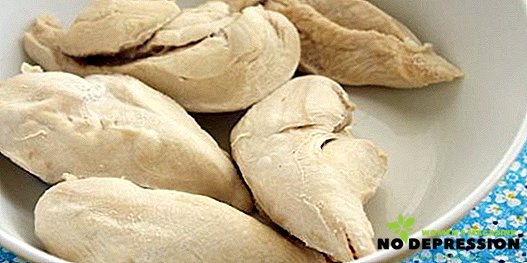Diabetes insipidus is a rare disease associated with impaired absorption of fluid by the kidneys. This disease is also called diabetes, since its development leads to the fact that the urine stops concentrating and diluted in a large amount of fluid leaves the body.

Clinical picture
Diabetes insipidus is a chronic disease of the hypothalamic-pituitary system. Develops due to a deficiency in the body of such a hormone as vasopressin. The disease may begin suddenly or develop gradually. The primary signs of diabetes insipidus include increased thirst and frequent urination.
Despite the fact that there are two pathologies similar in name: diabetes mellitus and diabetes insipidus, these are completely two different diseases. However, some symptoms may overlap. They are united only by some signs, but the pathologists themselves are caused by completely different disorders.
The body has a complex system that is responsible for the composition and volume of fluid. The kidneys, when removing excess fluid from the body, form urine that accumulates in the bladder. When water consumption decreases or weight loss occurs, the kidneys produce less urine. As a result, fluid is stored in the body.
The hypothalamus is a part of the brain that is responsible for the endocrine system and is involved in the development of vasopressin. With diabetes insipidus, all fluid is excreted from the body. The result is liters and tens of liters per day. Naturally, this process leads to intense thirst.
A sick person is forced to consume a lot of fluid in order to make up for its deficiency in the body. Diabetes insipidus is a rare endocrinopathy that develops regardless of gender and age. But most often occurs in persons from 20 to 40 years.
Moreover, in every fifth case, the disease develops as a complication after neurosurgical intervention.
Classification
In modern endocrinology, diabetes insipidus is classified according to the level at which the disorder occurs.
Central or neurogenic form
Developed as a result of serious changes in the nervous system, especially in the hypothalamus or pituitary gland. As a rule, the cause of this disease is operations performed on the complete or partial removal of the pituitary after injuries or changes in the inflammatory nature. In turn, the central type of the disease can be divided into:
- Idiopathic. It is a hereditary type.
- Symptomatic. Develops against other diseases. It can be both acquired and innate with some mutation of genes.
With prolonged central diabetes insipidus, the patient may develop renal insensitivity to an artificially introduced hormone. Therefore, the sooner treatment is started, the more favorable the prognosis will be.
Renal or nephrogenic diabetes insipidus
 This disease is associated with a reduced sensitivity of the tissues of the kidneys to the influence of hormones. This type of disease is quite rare. The reason for the pathology: or the structural inferiority of the nephrons, or renal receptor resistance to the hormone vasopressin. It can also be congenital or acquired.
This disease is associated with a reduced sensitivity of the tissues of the kidneys to the influence of hormones. This type of disease is quite rare. The reason for the pathology: or the structural inferiority of the nephrons, or renal receptor resistance to the hormone vasopressin. It can also be congenital or acquired.
In some cases, there is a third degree of diabetes mellitus, which affects women during the period of gestation. However, this is a very rare phenomenon that occurs as a result of the destruction of hormones by enzymes of the formed placenta. After the birth of a child, diabetes insipidus disappears.
Main reasons
Diabetes insipidus begins to develop with a lack of antidiuretic hormone vasopressin. It produces the hypothalamus. It performs a variety of functions, including affecting the functioning of the urinary system.
There are a number of factors that predispose to the development of this disease:
- infectious diseases, especially viral;
- brain tumors;
- metastases in the hypothalamus;
- genetic predisposition.
In the case of an idiopathic form of the disease in the patient's body, for no apparent reason, antibodies begin to be produced, which destroy the cells responsible for the production of antidiuretic hormone. Renal diabetes insipidus may occur as a result of intoxication of the body with various chemical and medical substances.
The main symptoms
The disease can be in both men and women at any age. The severity of symptoms depends on the degree of hormone deficiency. With a slight deficiency, symptoms are mild. Often, the first symptoms appear in people who have been in conditions of drinking deficit, for example, traveling, expeditions, or after taking corticosteroids.
The main symptoms that occur with diabetes insipidus include:
- excessive urination;
- the main volume of urination - at night;
- thirst;
- dry skin, vomiting, convulsions;
- various mental disorders, such as insomnia.
Even if the patient is limited in the use of fluid, urine will still be excreted in large quantities. This will lead to a general dehydration. In addition to common signs, there are a number of symptoms:
 In men. Men suffer from this disease as often as women. But, according to the latest data, new cases of diabetes insipidus are increasingly found in young people. Usually diseases are diagnosed in patients aged 10-30 years. The main symptoms include: urinary incontinence, severe thirst, decreased libido, headache, weight loss, peeling of the skin, dehydration.
In men. Men suffer from this disease as often as women. But, according to the latest data, new cases of diabetes insipidus are increasingly found in young people. Usually diseases are diagnosed in patients aged 10-30 years. The main symptoms include: urinary incontinence, severe thirst, decreased libido, headache, weight loss, peeling of the skin, dehydration.- Among women. Most often, the disease develops suddenly, accompanied by such phenomena as polyuria and polydipsia. More developed clinical signs include: poor appetite, weight loss, loss of appetite, pain in the stomach, nausea and heaviness, unstable stool, heartburn, belching, and disruption of the natural menstrual cycle. Also, the presence of non-diabetes mellitus in women can be indicated by such signs as: a decrease in the level of potassium in the blood, an increase in daily diuresis, an increase in the level of sodium and calcium in the blood.
- In children. Differences in symptoms in adult patients and children are minor. But in the latter case, more vivid manifestations of this pathology are possible: loss of appetite, increased vomiting when eating, difficulty defecation, pain in the joints.
How is the diagnosis?
Similar pathologies are dealt with by an endocrinologist. At the first visit, he will hold a conversation, which will tell you how much water you drink per day, whether there are problems with urination, any endocrine pathologies.
In typical cases, the diagnosis is not difficult, because it is based on:
- extreme thirst;
- volume of daily urine - more than 3 liters per day;
- increased sodium content;
- low relative urine density.
It is also possible to conduct laboratory diagnostics. It includes:
- Ultrasound of the kidneys;
- Brain CT;
- conducting samples Zimnitsky;
- radiography of the skull;
- detailed biochemical analysis of blood.

The diagnosis is confirmed on the basis of the following data: high sodium content, low relative urine density, high osmolar plasma levels.
How is the treatment?
The first step in diabetes mellitus is the elimination of the cause, which could provoke a similar condition. After that, it is recommended to take medication depending on the form of the disease.
Treatment of the central form is carried out in accordance with the amount of urine the patient loses every day. If it is less than 4 liters, the medication is not prescribed. There are several basic recommendations: consume as much fluid as possible, stick to a certain diet.
When a patient loses more than 4 liters of fluid per day, he is prescribed a drug that works like vasopressin or promotes its active development. The best option - the drug Minirin or its analogue Desmopressin.
Minirin features:
- suppresses pronounced symptoms;
- its dosage does not affect the patient’s age or body weight;
- dosage is always prescribed individually;
- The healing process starts with a minimum dose, but as it is needed it can be increased;
- the drug is taken 3 times a day.

Renal diabetes insipidus is treated with adequate fluid intake. If this does not help, medications are recommended. As a rule, doctors prescribe a means to help reduce the amount of urine. One of the most well-known means is Indapamide.
In some cases, anti-inflammatory drugs may be prescribed as adjunctive treatment. Their purpose is based on the fact that such funds provide a reduction in the receipt of certain components in the urinary canals of the nephron. However, only medication therapy alone is not enough to treat diabetes insipidus. Without nutrition correction, the effectiveness of treatment is reduced.
Features of nutrition in diabetes
Therefore, in the first place it is desirable to exclude table salt. You can consume no more than 5 g per day.
Also, remember that seasonings or spices can also contribute to an increase in the amount of urine. Therefore, they should be limited. There are some basic nutritional guidelines:
- consume dry fruits that contribute to the development of internal vasopressin;
- give up sweet foods, alcoholic drinks that increase thirst;
- include in your diet vegetables, berries, fruits, dairy and dairy products.
It is imperative that the body receives phosphorus in the required quantity. That it helps to ensure the full operation of the brain. Therefore, it is imperative to include in the diet seafood and lean fish.
It is recommended to eat food about 6-7 times a day in small portions.
Treatment with the help of folk remedies
According to the advice of doctors, the recipes of traditional medicine will help reduce the feeling of thirst, which, in turn, will ease the patient's condition.
One of the recipes: take 50 g of dried burdock root, pour 1 l of water, bring to a boil. Insist for 24 hours in a warm place and take 150 ml three times a day.
Another recipe: pour 250 ml of boiling water with 20 g of elder flowerlings, leave for a few hours to infuse. After this, filter, add some natural honey, take 250 ml 3 times a day.
Also for the treatment of diabetes insipidus walnut will help you. Preparing a decoction based on it is quite simple. Take about 5-7 crushed leaves of walnut, pour 250 ml of water and take one glass per day. To improve the activity of brain cells, 5 g of pea meal is taken every day.
To improve sleep and reduce irritability, take a soothing collection. Take valerian root, motherwort, dogrose, peppermint, mix everything in equal proportions. Then one tablespoon of the collection pour 250 ml of boiling water. Insist 2-3 hours and take 70 ml 3 times a day.
To get rid of insomnia, take equal proportions of valerian root, motherwort and cumin. 2 tablespoons of the mixture brewed in 400 liters of boiling water, leave to infuse for 5 hours. Filter and take on 125 ml of the composition during nervous excitement.


 In men. Men suffer from this disease as often as women. But, according to the latest data, new cases of diabetes insipidus are increasingly found in young people. Usually diseases are diagnosed in patients aged 10-30 years. The main symptoms include: urinary incontinence, severe thirst, decreased libido, headache, weight loss, peeling of the skin, dehydration.
In men. Men suffer from this disease as often as women. But, according to the latest data, new cases of diabetes insipidus are increasingly found in young people. Usually diseases are diagnosed in patients aged 10-30 years. The main symptoms include: urinary incontinence, severe thirst, decreased libido, headache, weight loss, peeling of the skin, dehydration.









